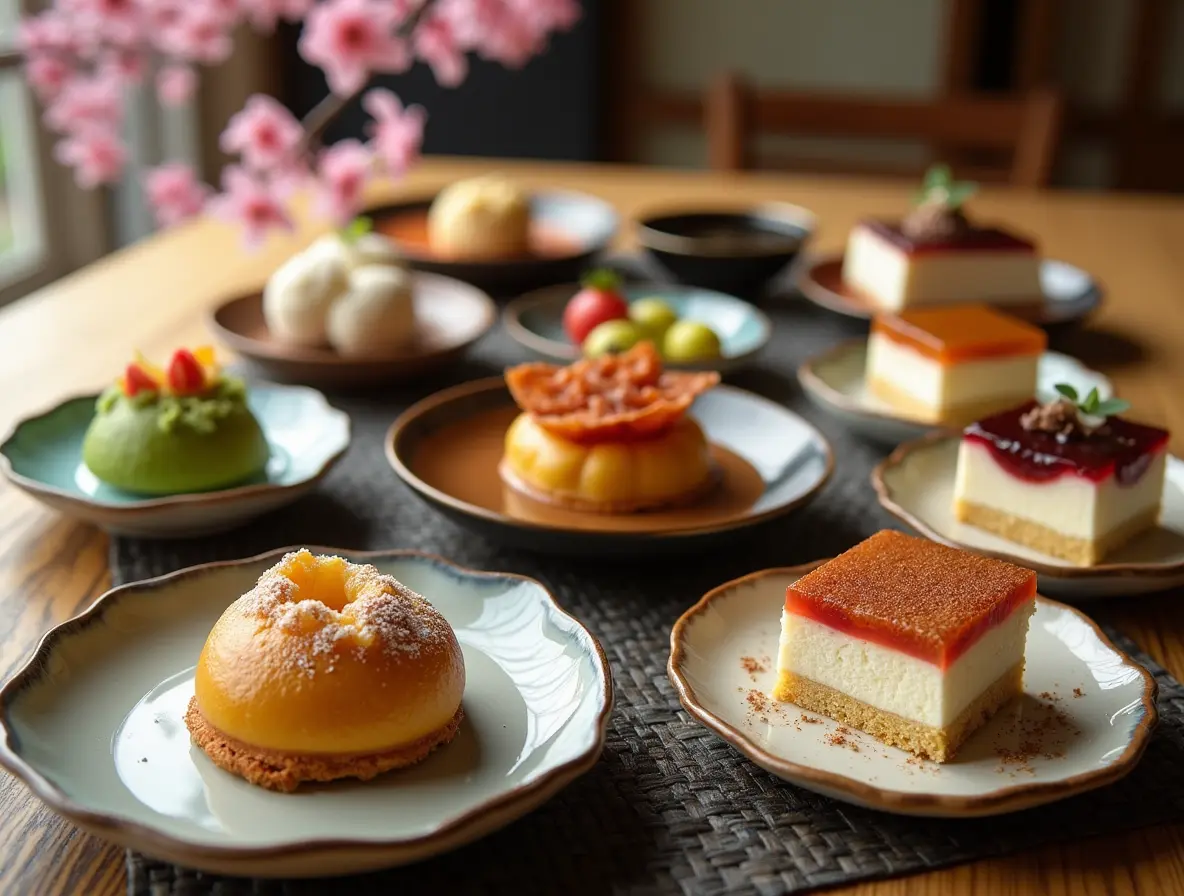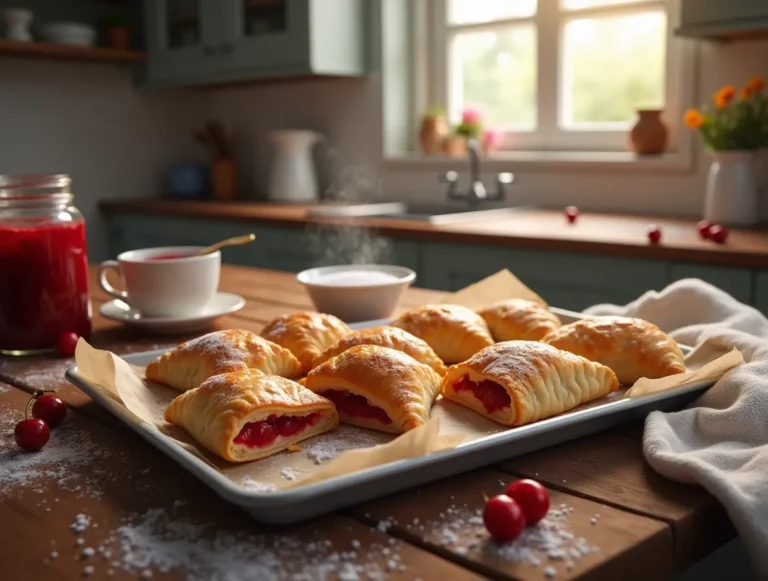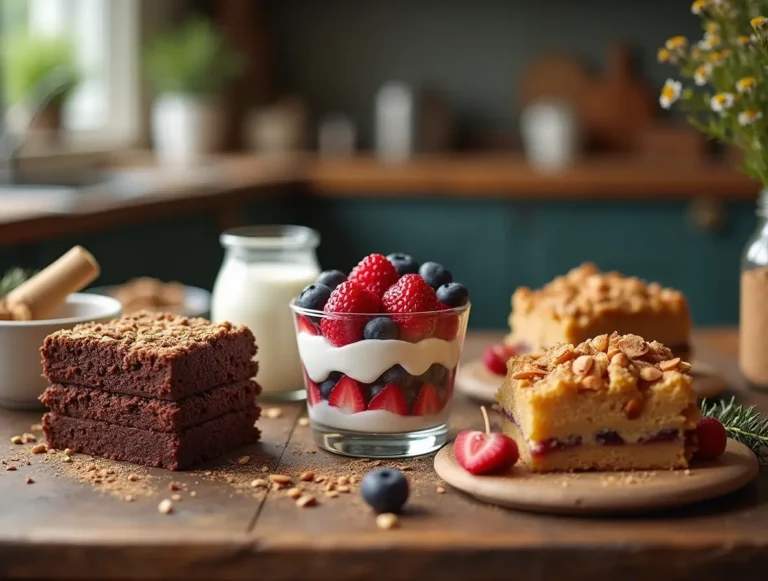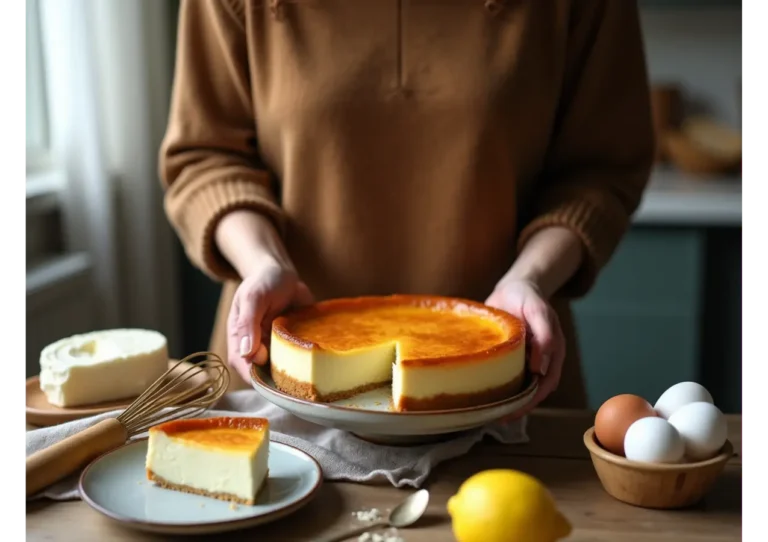Japanese Desserts: Discover 10 Must-Try Sweet Treats
Table of Contents
Welcome to a world where every bite tells a story—a story of tradition, artistry, and indulgence. In this article, you’ll explore the enchanting universe of japanese desserts and uncover the secrets behind each sweet treat. Get ready to embark on a culinary journey that transforms your dessert repertoire while connecting you with Japan’s rich cultural heritage. Whether you’re a seasoned baker or a curious beginner, you’ll find plenty of inspiration here to create, savor, and share these delightful sweets.
🍡 Introduction
Imagine yourself in a serene Japanese garden, the soft rustling of leaves around you, as you experience your first bite of a delicate dessert. That moment—the blend of subtle sweetness and complex textures—captures the essence of japanese desserts. You’re not just tasting a treat; you’re embracing a tradition that spans centuries. With each bite, you get a taste of the artistry behind japanese sweet food that has been refined over generations.
As you continue reading, you’ll discover the historical roots of these treats, explore ten must-try desserts, and learn how to create your own at home with easy-to-follow japanese dessert recipes. This article is designed to guide you step by step, making it simple to bring a piece of Japan into your kitchen.
🍥 The Rich World of Japanese Desserts
Japanese desserts are much more than just sweets—they are a celebration of culture, history, and artistic expression. Let’s dive into what makes these desserts unique and why they have captured hearts all over the world.
🍵 History & Cultural Significance
Japanese desserts have evolved over centuries, initially crafted for special celebrations and seasonal festivals. When you indulge in a traditional japanese desserts recipe, you’re experiencing a culinary art form that has been passed down through generations.
- Cultural Roots: Many of these recipes are intertwined with Japan’s seasonal traditions and cultural festivities. Every dessert tells a story—of nature, of artistry, and of the impermanence of life.
- Historical Insights: Historical texts and cultural studies reveal that even the simplest dessert was once a symbol of prosperity and well-being. This rich heritage makes every bite of japanese sweet food an immersive experience.
- Artistic Presentation: In Japan, the presentation of food is as important as the taste. The meticulous plating and subtle colors of these desserts reflect a deep appreciation for beauty and balance.
🍮 What Makes Japanese Desserts Unique?
There is a distinctive charm to japanese desserts that sets them apart from other sweets around the world. It all comes down to balance, subtlety, and the harmonious blend of flavors.
- Texture & Flavor Harmony: Every dessert offers a perfect equilibrium between chewy, smooth, and crunchy elements. You’ll notice that the slight bitterness of matcha or the earthiness of azuki beans is balanced by just the right amount of sweetness.
- Visual Elegance: The simple yet elegant presentation is a hallmark of these treats. The understated beauty in the arrangement of ingredients enhances your dining experience.
- High-Quality Ingredients: Authentic japanese sweet food depends on premium ingredients like matcha, glutinous rice, and natural sweeteners. This focus on quality helps preserve the traditional flavors.
- Innovative Twists: Modern chefs often experiment by blending old techniques with new ideas, resulting in fresh interpretations of japanese dessert recipes. This creativity has led to some of the most popular japanese desserts enjoyed today.
🍰 Top 10 Must-Try Japanese Desserts & Sweet Treats
Let’s now explore the top 10 Japanese desserts that you simply must try. Each dessert is a testament to Japan’s culinary ingenuity, offering unique textures and flavors that promise an unforgettable taste experience.
🍥 1. Matcha Mochi
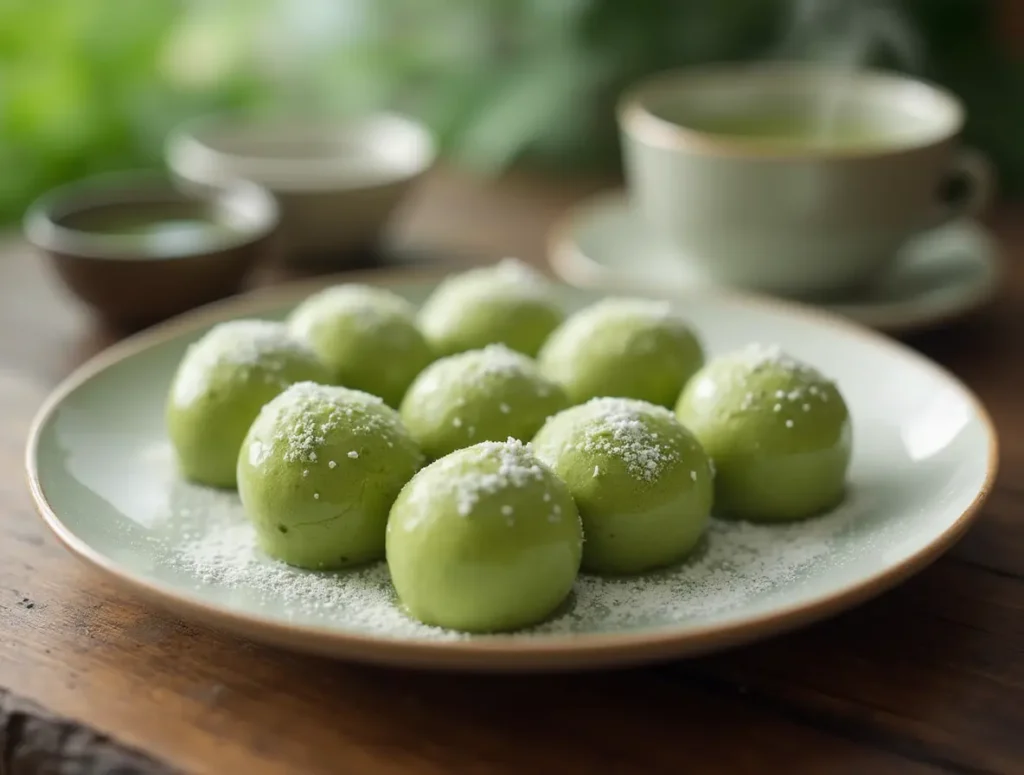
Matcha mochi is a classic dessert that embodies the essence of Japanese sweets. This treat combines the earthy, slightly bitter taste of matcha with the soft, chewy texture of mochi.
Key Points:
- Texture: Soft, sticky, and chewy.
- Flavor: A perfect balance of matcha’s natural bitterness and a hint of sweetness.
- Cultural Note: Often enjoyed during traditional tea ceremonies, matcha mochi is a staple in many japanese dessert recipes.
Why Try It?
This dessert offers an authentic experience of Japan’s culinary tradition. It’s a must-try if you want to immerse yourself in the world of japanese sweet food.
🍽️ Ingredients & Preparation
Ingredients:
- 1 cup glutinous rice flour
- 2 tsp premium matcha powder
- 3 tbsp sugar
- 1/2 cup lukewarm water
- Cornstarch (for dusting)
Step-by-Step Guide:
- In a bowl, whisk together the glutinous rice flour, matcha powder, and sugar.
- Gradually add the lukewarm water while stirring until a smooth batter forms.
- Pour the mixture into a heat-safe dish and steam for 20 minutes until the mochi becomes soft and chewy.
- Dust a clean surface with cornstarch and carefully turn out the steamed mochi.
- Let it cool slightly, then cut into bite-sized pieces and serve warm or at room temperature.
🍵 2. Dorayaki
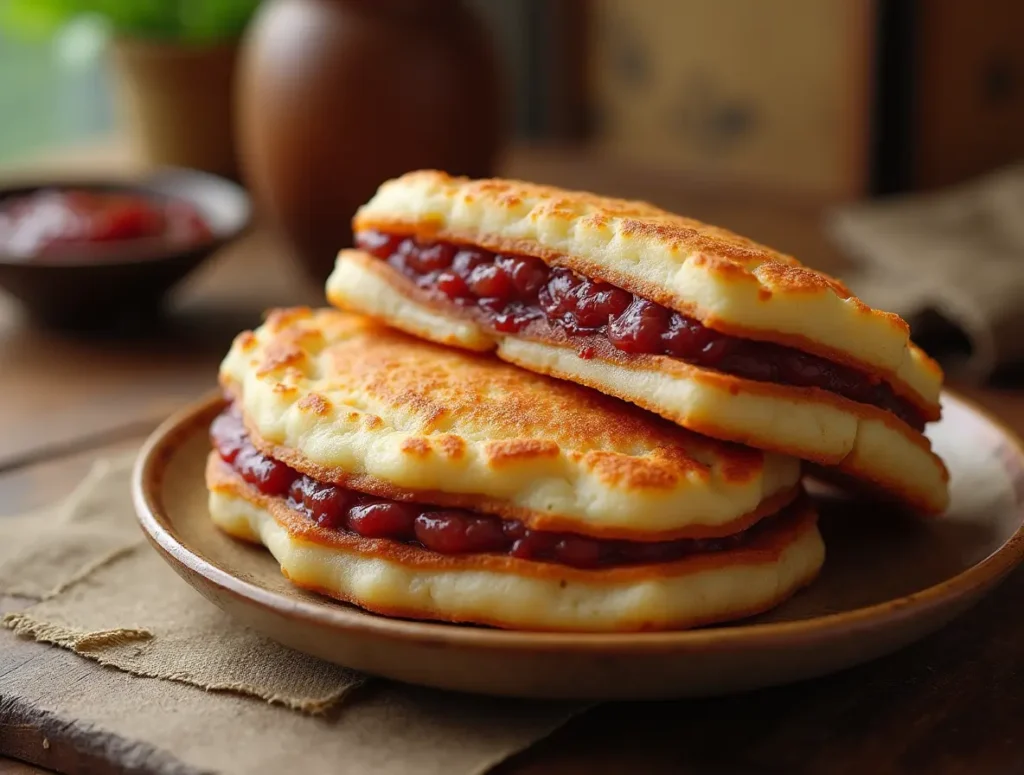
Dorayaki consists of two fluffy pancakes sandwiched with sweet red bean paste. Beloved by both children and adults, this dessert is a comforting blend of textures and flavors.
Key Points:
- Flavor: The sweetness of the red bean paste contrasts beautifully with the light, spongy pancakes.
- Texture: Soft and airy, providing a satisfying bite.
- Cultural Note: A recognized favorite among popular japanese desserts, dorayaki has made its way into literature and animation, symbolizing warmth and nostalgia.
Why Try It?
Dorayaki is a delightful introduction to japanese dessert recipes, combining simplicity with tradition.
🍽️ Ingredients & Preparation
Ingredients:
- 1 cup all-purpose flour
- 2 large eggs
- 1/2 cup sugar
- 1 tsp baking powder
- 1 tbsp honey
- Sweet red bean paste (for filling)
Step-by-Step Guide:
- In a bowl, beat the eggs and sugar until the mixture becomes frothy and light.
- Sift in the flour and baking powder, then add honey, mixing gently until you get a smooth batter.
- Let the batter rest for about 15 minutes.
- Heat a non-stick pan over low heat and pour small rounds of batter (about 3-4 inches in diameter).
- Cook until bubbles form on the surface, then gently flip to cook the other side until golden brown.
- Spread a generous spoonful of sweet red bean paste on one pancake and top it with another to form a sandwich.
- Serve warm as a comforting treat.
🍮 3. Anmitsu
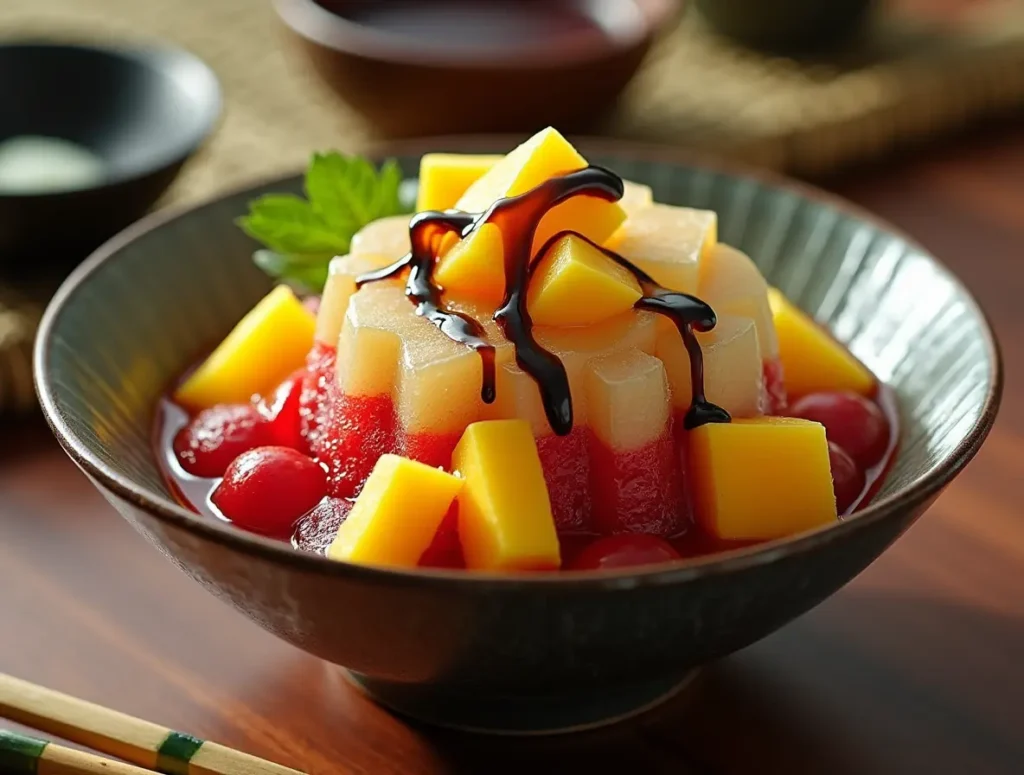
Anmitsu is a refreshing dessert featuring agar jelly, sweet red beans, a medley of fresh fruits, and a drizzle of black syrup. Its vibrant flavors make it a perfect treat for warm days.
Key Points:
- Variety: Enjoy a mix of textures and flavors in every bite.
- Refreshment: A cooling and satisfying dessert that highlights the best of traditional japanese desserts recipe.
Why Try It?
If you love a dessert that offers both complexity and refreshment, anmitsu is the ideal choice.
🍽️ Ingredients & Preparation
Ingredients:
- 1 tsp agar agar powder
- 2 cups water
- 1/2 cup sweet red beans
- 1 cup assorted fresh fruits (e.g., mango, peach, kiwi), diced
- Black syrup (kuromitsu), to drizzle
- Optional: small mochi balls (shiratama dango)
Step-by-Step Guide:
- Dissolve the agar agar powder in water and bring to a boil. Simmer briefly and pour the mixture into a shallow tray. Let it cool until set into a firm jelly.
- Once firm, cut the jelly into small cubes.
- Arrange the agar cubes in a bowl along with sweet red beans and diced fresh fruits.
- Drizzle black syrup generously over the top.
- Optionally, add small mochi balls for an extra chewy texture.
- Serve chilled for a refreshing dessert experience.
🍰 4. Taiyaki
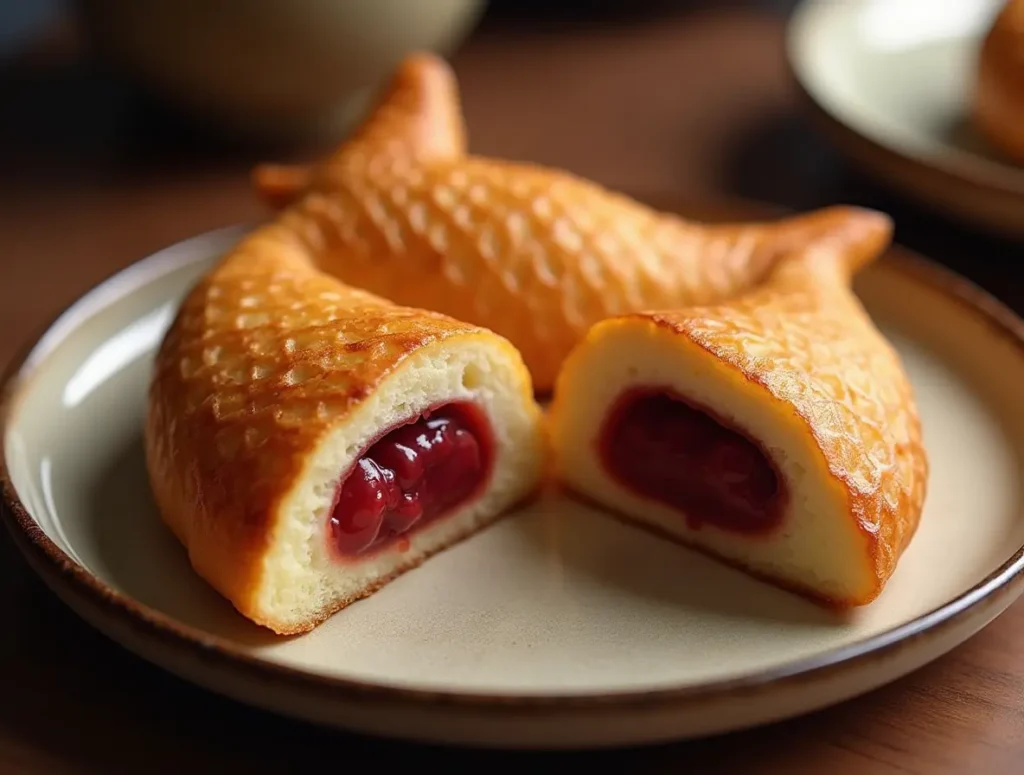
Taiyaki is a fish-shaped cake typically filled with red bean paste. Modern versions may offer alternative fillings such as custard or chocolate, making it a versatile treat.
Key Points:
- Shape: Its unique fish design is both charming and iconic.
- Flavor: A crisp exterior paired with a soft, flavorful filling.
- Cultural Note: As one of the popular japanese desserts, taiyaki brings both fun and tradition together.
Why Try It?
This dessert is not just about taste—it’s an experience that combines visual delight with culinary craftsmanship.
🍽️ Ingredients & Preparation
Ingredients:
- 1 cup all-purpose flour
- 1 egg
- 2 tbsp sugar
- 1 tsp baking powder
- 3/4 cup milk
- 1/2 cup sweet red bean paste (or your choice of filling)
Step-by-Step Guide:
- In a large bowl, whisk together the flour, egg, sugar, baking powder, and milk until a smooth batter forms.
- Preheat your taiyaki pan and lightly grease it.
- Pour a small amount of batter into each mold, then add a spoonful of red bean paste in the center.
- Cover with a little more batter and close the pan.
- Cook for 3-4 minutes on each side until the taiyaki turns golden brown.
- Remove from the pan and serve warm for an authentic taste.
🍵 5. Yokan
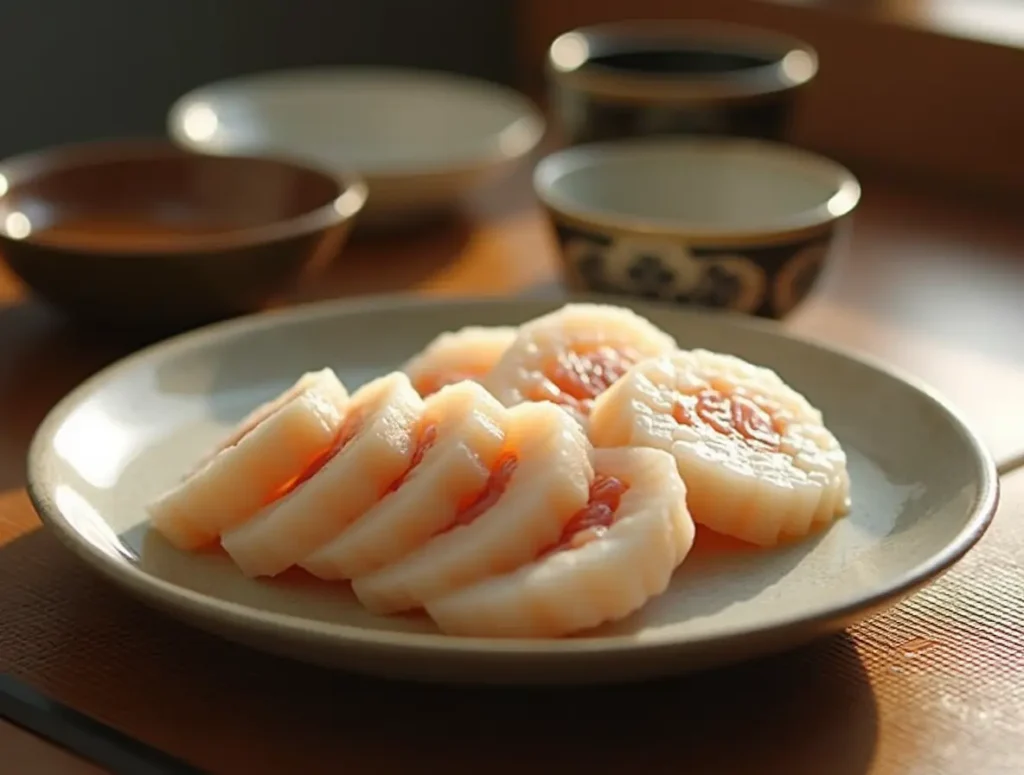
Yokan is a dense, jellied dessert made from red bean paste, agar, and sugar. It’s typically served in neat, small slices.
Key Points:
- Texture: Firm yet smooth, allowing the flavors to linger on your palate.
- Flavor: Intensely sweet with a robust bean flavor.
- Cultural Note: Yokan stands as a testament to a cherished traditional japanese desserts recipe.
Why Try It?
Its elegant simplicity makes yokan an ideal treat for those who appreciate subtle, refined flavors.
🍽️ Ingredients & Preparation
Ingredients:
- 1 cup sweet red bean paste
- 1 tsp agar agar powder
- 1/4 cup sugar
- 1 cup water
Step-by-Step Guide:
- In a saucepan, combine water, agar agar, and sugar. Bring to a simmer until everything dissolves completely.
- Stir in the red bean paste and mix thoroughly.
- Pour the mixture into a greased mold and let it cool to room temperature.
- Once set and firm, slice into small pieces and serve.
🍰 6. Daifuku
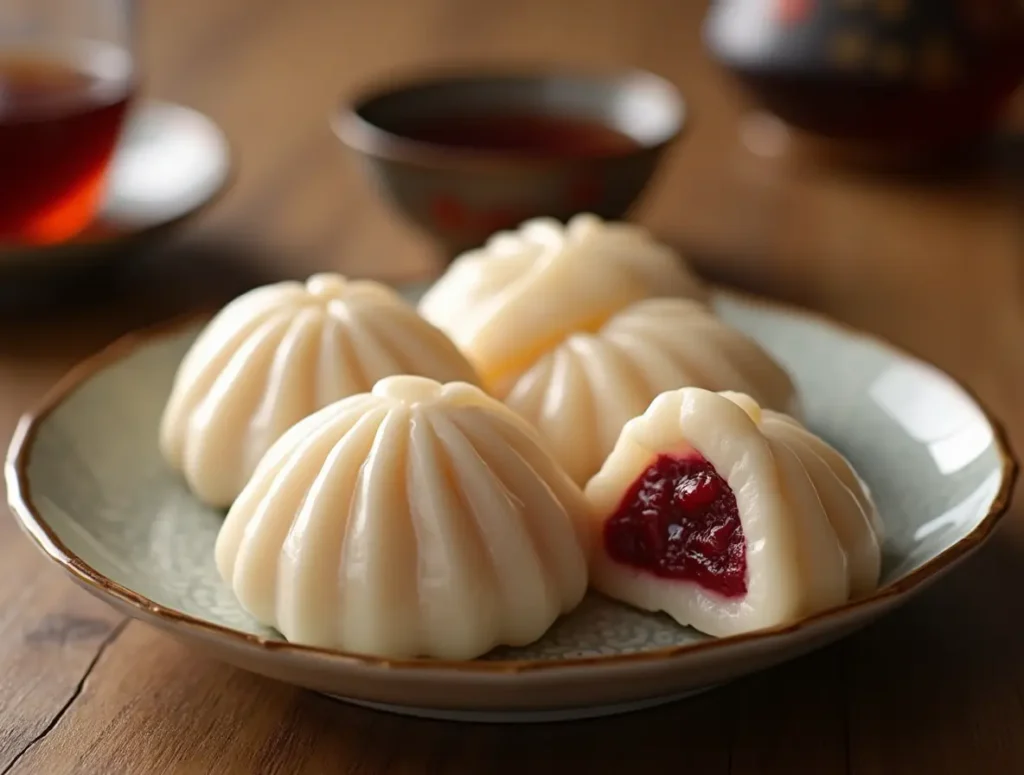
Daifuku is a soft mochi dessert filled with sweet red bean paste. Variations can include fruit fillings or even custard, making it a versatile treat.
Key Points:
- Texture: The contrast between the chewy mochi and the smooth filling is simply delightful.
- Flavor: A harmonious blend that is perfectly balanced in sweetness.
- Cultural Note: A staple in many japanese dessert recipes, daifuku is often enjoyed during festivals and family gatherings.
Why Try It?
Its versatility and unique texture make it a fun and engaging dessert to try at home.
🍽️ Ingredients & Preparation
Ingredients:
- 1 cup glutinous rice flour
- 3/4 cup water
- 2 tbsp sugar
- 1/2 cup sweet red bean paste (or fruit filling)
Step-by-Step Guide:
- In a bowl, mix the glutinous rice flour, water, and sugar until the batter is smooth.
- Steam the batter in a heat-proof bowl for 15-20 minutes until set.
- Allow the steamed mochi to cool slightly, then flatten it into small, round discs.
- Place a spoonful of sweet red bean paste in the center of each disc and gently wrap the mochi around it.
- Dust with cornstarch to prevent sticking, then serve.
🍵 7. Castella Cake
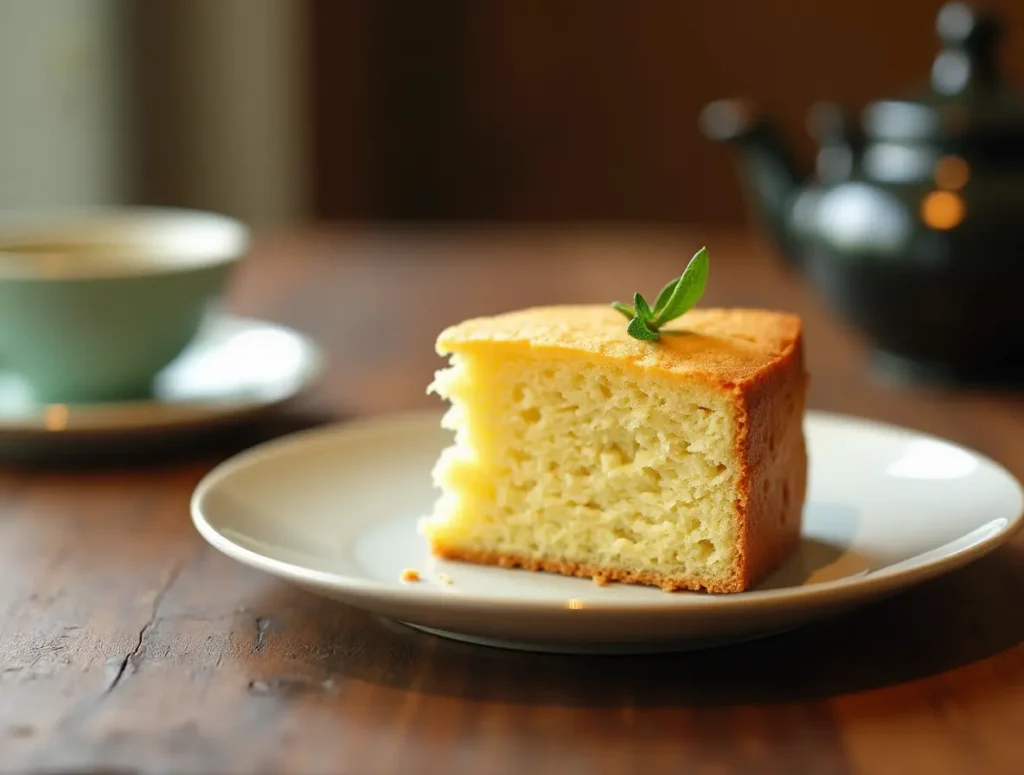
Castella Cake, introduced to Japan by Portuguese traders, is a soft sponge cake that has been transformed into a Japanese delicacy.
Key Points:
- Texture: Light, airy, and melt-in-your-mouth soft.
- Flavor: Mild sweetness that pairs perfectly with tea.
- Cultural Note: Now considered one of the popular japanese desserts, it’s an excellent example of cultural fusion.
Why Try It?
Its delicate texture and subtle flavor make Castella Cake a must-try for anyone who enjoys japanese sweet food.
🍽️ Ingredients & Preparation
Ingredients:
- 4 large eggs
- 1 cup sugar
- 1 cup all-purpose flour
- 2 tbsp honey
- 1/4 cup milk
Step-by-Step Guide:
- Beat the eggs and sugar together until the mixture becomes thick, pale, and frothy.
- Stir in the milk and honey gently.
- Sift the flour and carefully fold it into the egg mixture to maintain the airy texture.
- Pour the batter into a castella mold or baking pan lined with parchment paper.
- Bake at 160°C (320°F) for 40-45 minutes until the cake is set and golden.
- Let the cake cool completely before slicing and serving.
🍰 8. Monaka
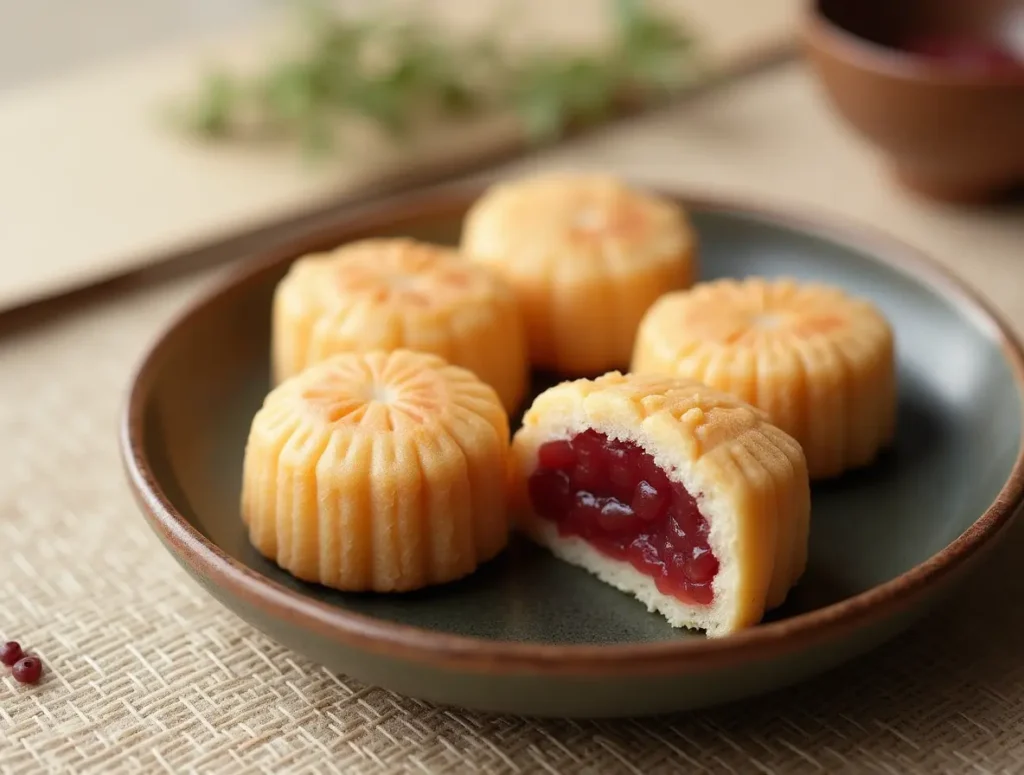
Monaka features a crisp wafer shell filled with sweet red bean paste. The contrast between the crunchy exterior and the smooth filling creates a delightful sensory experience.
Key Points:
- Texture: Crisp on the outside with a soft, sweet interior.
- Flavor: The red bean paste provides a rich and satisfying sweetness.
- Cultural Note: Monaka is a time-honored traditional japanese desserts recipe that continues to charm dessert lovers.
Why Try It?
Enjoy this treat as a light dessert or snack that perfectly complements a cup of tea.
🍽️ Ingredients & Preparation
Ingredients:
- Monaka wafer sheets (store-bought or homemade)
- 1/2 cup sweet red bean paste
Step-by-Step Guide:
- If making wafers at home, prepare a thin batter with a little flour, water, and sugar, then bake into thin, crisp sheets.
- Spoon a generous amount of sweet red bean paste onto one wafer sheet.
- Place another wafer on top to form a sandwich, pressing gently to adhere.
- Serve immediately or store in an airtight container for a crisp texture.
🍵 9. Warabi Mochi
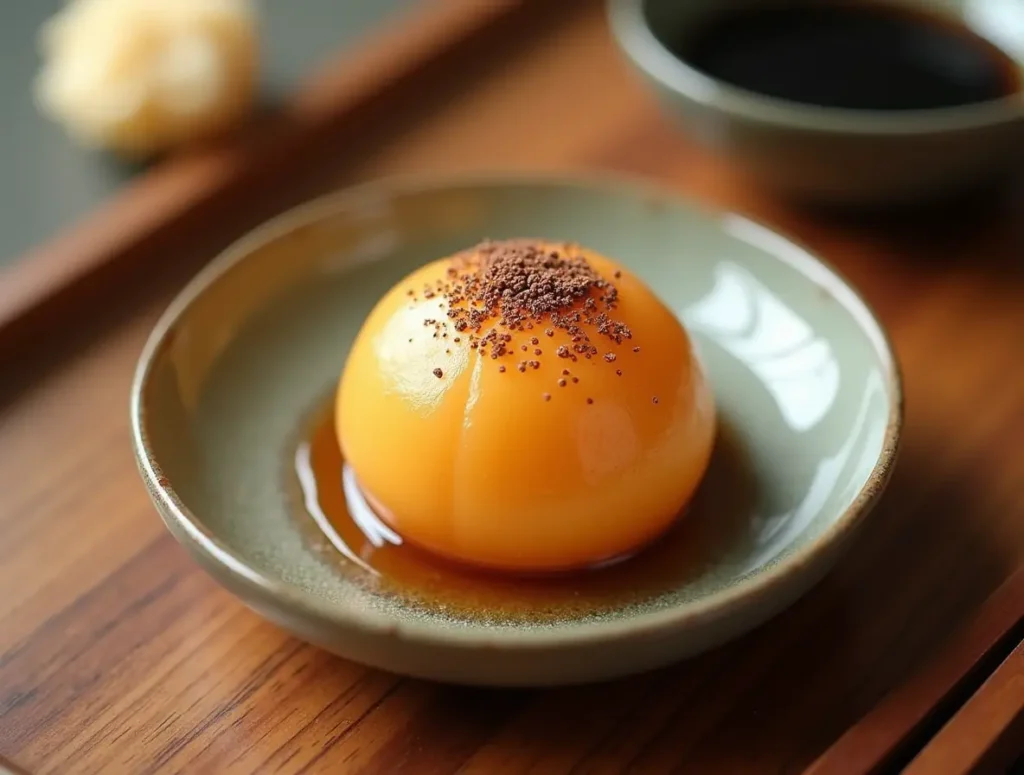
Warabi mochi is a unique, jelly-like dessert made from warabi (bracken) starch. It is traditionally dusted with kinako (roasted soybean flour) and served with a sweet syrup.
Key Points:
- Texture: Soft and slightly chewy, offering a melt-in-your-mouth sensation.
- Flavor: The subtle nuttiness of kinako pairs beautifully with the delicate sweetness.
- Cultural Note: An innovative twist on classic japanese dessert recipes, warabi mochi is a refreshing alternative in the realm of japanese sweet food.
Why Try It?
It’s a distinctive treat that offers a unique texture and flavor experience.
🍽️ Ingredients & Preparation
Ingredients:
- 1/2 cup warabi starch (or bracken starch substitute)
- 1 cup water
- 2 tbsp sugar
- Kinako (for dusting)
- Black sugar syrup (to drizzle)
Step-by-Step Guide:
- In a saucepan, mix warabi starch, water, and sugar.
- Cook over low heat while stirring continuously until the mixture thickens into a smooth, gelatinous consistency.
- Pour the thickened mixture into a shallow dish and allow it to cool completely.
- Once set, cut into bite-sized pieces.
- Dust generously with kinako and serve drizzled with black sugar syrup.
🍰 10. Sakura Cheesecake
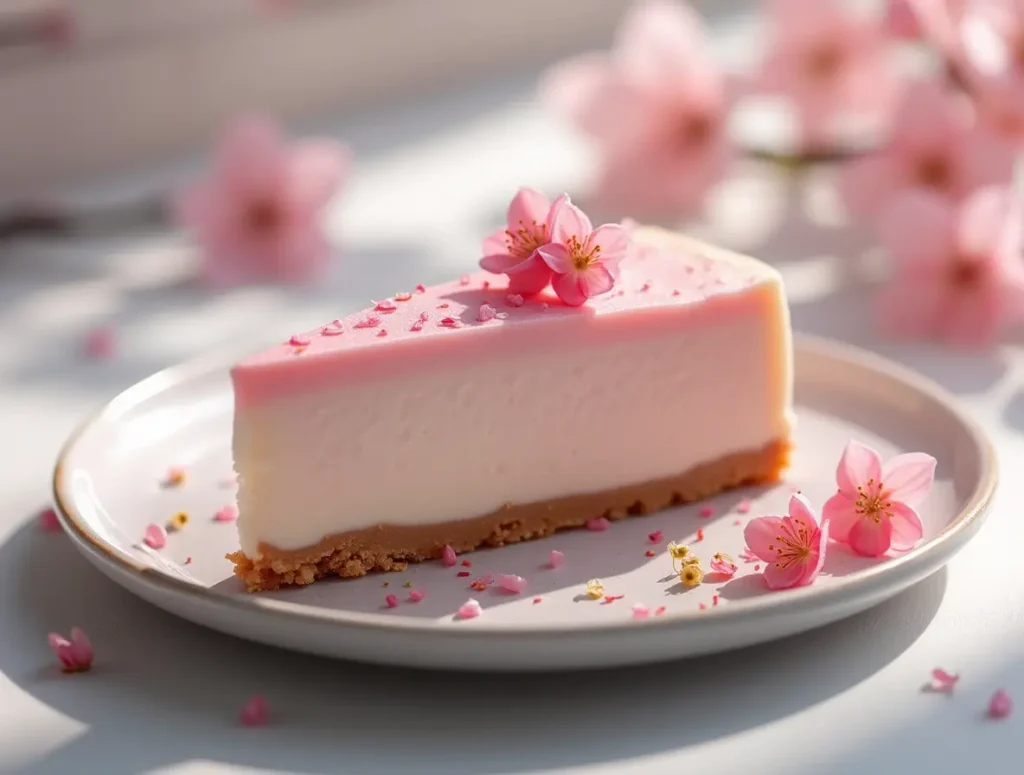
Sakura Cheesecake is a modern twist on the classic dessert, infused with cherry blossom flavor that embodies the fleeting beauty of spring in Japan.
Key Points:
- Texture: Creamy and smooth, with a delicate sponge base.
- Flavor: Light floral notes of sakura harmonize with a rich, tangy cheesecake.
- Cultural Note: As an emerging popular japanese desserts option, this treat brilliantly fuses Western cheesecake with Japanese influences.
Why Try It?
Its innovative blend of flavors makes it a must-try for anyone seeking a modern take on japanese dessert recipes.
🍽️ Ingredients & Preparation
Ingredients:
- 200g cream cheese
- 1/2 cup sugar
- 2 eggs
- 1 tsp sakura extract
- 1 cup digestive biscuits (crushed for the base)
- 4 tbsp melted butter
Step-by-Step Guide:
- For the crust, mix the crushed digestive biscuits with melted butter and press firmly into the base of a springform pan.
- In a separate bowl, beat the cream cheese and sugar until smooth.
- Add the eggs one at a time, ensuring each is fully incorporated before adding the next.
- Stir in the sakura extract to infuse the cheesecake with a subtle floral aroma.
- Pour the cheesecake filling onto the prepared crust.
- Bake in a preheated oven at 160°C (320°F) for 40-50 minutes, or until the center is just set.
- Allow the cheesecake to cool completely before refrigerating for at least 3 hours. Serve chilled.
🎌 How to Create Your Own Japanese Dessert Recipes at Home
There is no better way to appreciate japanese desserts than by crafting them yourself. By preparing these treats in your own kitchen, you can tailor the flavors to your liking while honoring traditional techniques.
🥢 Step-by-Step Guide
- Source Quality Ingredients:
Look for high-quality ingredients like premium matcha, glutinous rice flour, and natural sweeteners. This attention to quality is what sets japanese sweet food apart. - Prepare Your Workspace:
Organize your kitchen with all necessary tools: mixing bowls, steamers, and precise measuring utensils. - Embrace Traditional Techniques:
Many traditional japanese desserts recipe require careful attention to detail. Take your time to master each step. - Experiment with Your Twist:
Once you feel comfortable with the basics, don’t hesitate to innovate. You might enjoy exploring flavors from other desserts—check out our Mango Pudding Recipe or try our Greek yogurt desserts for more inspiration. - Focus on Presentation:
In Japanese cuisine, presentation is key. Consider creative plating ideas and learn from our recipes like Grandma’s White Cake Recipe or the Million Dollar Pound Cake.
❓ Frequently Asked Questions about Japanese Desserts
Here are some of the most common questions you might have as you venture into the world of japanese desserts:
- Q1: What defines authentic japanese desserts?
A: Authenticity comes from a careful balance of flavors and textures. Every traditional japanese desserts recipe uses time-honored ingredients and techniques perfected over generations. - Q2: Which japanese dessert recipes are best for beginners?
A: If you’re just starting out, consider simple recipes like dorayaki or daifuku. Their uncomplicated techniques make them a great introduction to japanese dessert recipes. You might also explore our oatmeal raisin cookie recipes if you enjoy baking cookies. - Q3: How can I adapt a traditional japanese desserts recipe for modern tastes?
A: Experimentation is key. Try incorporating new flavors such as chocolate or fruit. For instance, our prime bites or lemon brownies recipe offer a modern twist while retaining traditional elements. - Q4: What makes certain desserts stand out as popular japanese desserts?
A: Desserts like taiyaki, matcha mochi, and sakura cheesecake have gained global popularity due to their unique flavors and cultural resonance. Their appeal is enhanced by their visual presentation and innovative interpretations. If you’re interested in cookie variations, you might check out our brownie ice cream or sourdough brownies. - Q5: Can I experiment with ingredients if I can’t find traditional components?
A: Yes! While authenticity is important, creative substitutions can yield delicious results. For more cookie options, our crumbl cookie recipe, no butter cookies, or sourdough discard chocolate chip cookies might inspire you further. Additionally, our cheesecake cookies are a great example of blending classic techniques with modern twists.
For further inspiration and to see more variations, check out this external guide on the best Japanese desserts.
🎉 Conclusion
In your journey through the delightful realm of japanese desserts, you’ve discovered a treasure trove of flavors, textures, and rich cultural heritage. From the earthy notes of matcha in mochi to the innovative twist of sakura cheesecake, every dessert offers a unique window into Japan’s culinary artistry. Whether you choose to recreate these treats at home or explore them at your favorite Japanese café, remember that each bite is an opportunity to experience a story that spans centuries.
Now it’s your turn to bring these recipes to life in your own kitchen. Embrace the challenge of trying out these japanese dessert recipes, and don’t be afraid to add your personal twist. As you experiment, share your successes and learnings with fellow dessert enthusiasts. You might even be inspired to try out other recipes on our site—perhaps our Oreo Ice Cream Cake, Pineapple Dump Cake, or even our Cake Using Fruit Cocktail.
If you’re looking to expand your dessert repertoire even further, explore additional creations like our Brownie Mix Cookie, Depression Cake Recipe, or How to Use Glycerine in Cake Baking. For those who love a good challenge, our selection also includes treats like Madeleine Cookies, Pecan Pie Brownies, and even Diabetic Dessert Recipes.
You might also try our Sour Milk Recipes Dessert, Gluten Free and Dairy Free Desserts, Orange Zest Low Carb Dessert, or Peach Dessert Recipe. Don’t forget to check out our fun cookie recipes including prime bites, lemon brownies recipe, brownie ice cream, sourdough brownies, crumbl cookie recipe, no butter cookies, sourdough discard chocolate chip cookies, and cheesecake cookies.
Call to Action:
Now that you’ve discovered these mouthwatering treats, it’s time to get creative in your kitchen. Subscribe to our newsletter for more recipes, share your culinary adventures in the comments below, and join a community of dessert lovers who celebrate the art of japanese desserts every day. Your next masterpiece is just a recipe away!
Embrace the tradition, savor the innovation, and let every bite remind you of the beauty found in simplicity. Happy baking and even happier tasting!
By following this comprehensive guide, you not only enrich your knowledge of japanese sweet food but also empower yourself with the skills to create authentic desserts. Enjoy the journey, experiment with flavors, and let your creativity shine through every dessert you make.
Made It? Nailed It? Let Us Know!
There are no reviews yet. Be the first one to write one.

